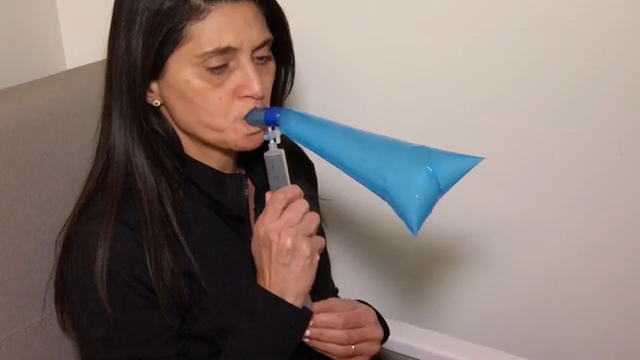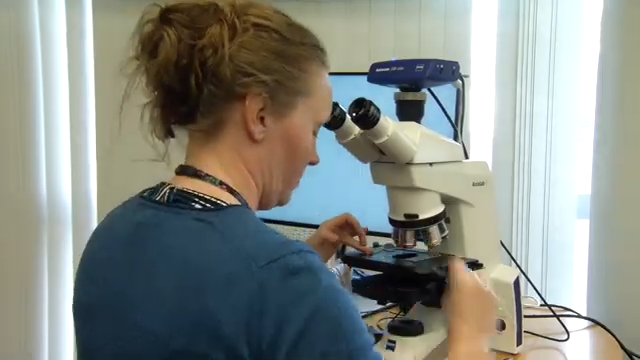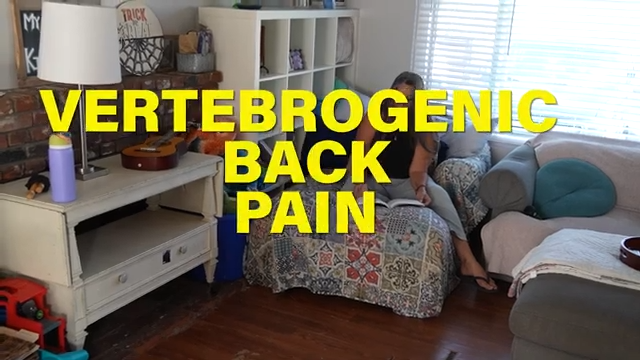PHOENIX, Ariz. (Ivanhoe Newswire) — People who suffer catastrophic breaks to their long leg bones usually face multiple surgeries, and all too often, amputation. Scientists at the University of Arizona have been working for more than 20 years to improve the treatment protocol.
Yudith Burreal broke her leg when an ATV rolled on her a year ago.
“It was completely missing. They didn’t know, it was a big chunk of my bone. It was my tibia bone,” said Burreal.
Her doctors used her bone and marrow to fix the break. But Burreal ended her plans to go into the military, believing her leg wouldn’t support her in training.
University of Arizona researchers are developing a way to fix broken long bones with stem cells, a 3D printed scaffold, and a sensor to monitor exercise that helps bones heal.
“If we can fill our scaffold with these cells, the bone will start to form throughout the length of the scaffold,” said John A. Szivek, PhD, Professor, Orthopaedic Surgery, William and Sylvia Rubin Chair of Orthopedic Research, Director, Robert G. Volz Orthopedic Research Laboratory, and Senior Scientist at Arizona Arthritis Center.
Stem cells are multiplied in a lab, and run, with calcium particles, through the scaffold between the bone ends. A rod holds it in place for six to nine months. The bone grows in and around the scaffold.
“Lately, we have been successful with removing all of the supporting hardware and showing that supporting the bone that we’re regrowing is actually functional tissue, to show that it does not need any additional orthopedic hardware in order to function,” David Margolis, MD, PhD, Assistant Professor, Orthopedic Surgery at the University of Arizona.
This work is funded by a two million dollar grant from the Defense Department.
Szivek said, “We believe that using this type of approach could regrow the bones for the soldiers and they would be able to return to active military service.”
Researchers will report the recent success they’ve had with procedures on sheep to the FDA. If the agency accepts it, a phase one trial of fewer than ten people could start soon at Banner-University Medical Center in Phoenix.
Contributors to this news report include: Wendy Chioji, Field Producer; Bruce Maniscalco, Videographer; Cyndy McGrath, Supervising Producer; Ken Ashe, Editor.
To receive a free weekly e-mail on Medical Breakthroughs from Ivanhoe, sign up at: http://www.ivanhoe.com/ftk
MEDICAL BREAKTHROUGHS
RESEARCH SUMMARY
TOPIC: STEM CELLS REGROW LONG BONES
REPORT: MB #4630
BACKGROUND: Long bones include the humerus, radius, ulna, femur, tibia and fibula. Fracturing one of these bones can result in an acute, comminuted, or stress fracture. Acute fractures have a dramatic presentation, whereas a stress fracture is not as noticeable and a little more subtle. A comminuted fracture is when the bone is broken down into many little pieces. Normally it takes a massive force to break a long bone, like a car or motorcycle accident. Most car or motorcycle accidents cause a comminuted fracture. Sports injuries like falling while skiing or running into someone during a soccer or football game can also result in the breaking of a long bone.
(Source: https://www.texashealth.org/thpg/texas-foot-ankle-orthopedics/conditions-we-treat/lower-extremity-trauma/long-bone-fracture & https://bestpractice.bmj.com/topics/en-us/386)
TREATMENT: Treatments include surgical and non-surgical treatments depending on a patient’s health and severity of the fracture. Initial treatment may involve your physician applying a splint to provide comfort and support. Another non-surgical method is a cast and functional brace. Surgical treatment is needed if the patient has an open fracture with wounds that need monitoring or if the fracture never healed after a non-surgical treatment. Surgical procedures include intramedullary nailing, plates and screw, and external fixation.
REGROWING BONES: John A. Szivek, PhD, Professor, Orthopaedic Surgery, William and Sylvia Rubin Chair of Orthopedic Research, Director, Robert G. Volz Orthopedic Research Laboratory, and Senior Scientist at the Arizona Arthritis Center explains how stem cells are helping regrow bones so that patients do not have to use cadaver bone to replace what was damaged. “The way we’re doing that is we start off with creating what’s called a scaffold. The scaffold is just a template. That template will help that new bone form in the right shape and structure. And we fill these scaffolds for the patients with their own stem cells. We call them adult stem cells. And we extract those stem cells from the patient’s own fat,” said Szivek. He adds that there are more benefits to this than former procedures, saying, “The advantage of doing that is there’s no rejection potential because we’re using the person’s own cells. And the other advantage is that if we can fill our scaffold with these cells, the bone will start to form throughout the length of that scaffold.”
(Source: John Szivek, PhD)
FOR MORE INFORMATION ON THIS REPORT, PLEASE CONTACT:
Jean Spinelli, PR
520-626-2531
If this story or any other Ivanhoe story has impacted your life or prompted you or someone you know to seek or change treatments, please let us know by contacting Marjorie Bekaert Thomas at mthomas@ivanhoe.com




